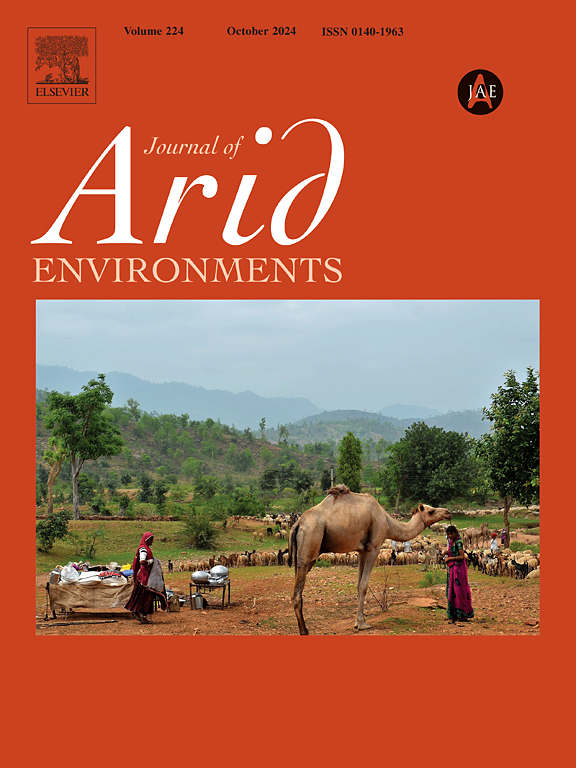Hidden biodiversity: Dryland soil seed banks across ecological sites and states
IF 2.6
3区 环境科学与生态学
Q2 ECOLOGY
引用次数: 0
Abstract
Grassland degradation can hinder global dryland ecosystems with aboveground vegetation a key indicator of transitions from a healthy reference state to undesirable, or degraded states. The soil seed bank may either mirror, or diverge, from its associated aboveground vegetation. To better understand this relationship, we examined vegetation and seed banks across soil types (ecological sites) and vegetation/soil states (ecological states). To assess the soil seed bank, we sampled replicate soil seed bank collections across 67 individual ecological site and state combinations in the northern Chihuahuan Desert U.S.A. We found low species overlap between aboveground vegetation and the soil seed bank ranging from 0% to 30%. Sand dominated ecological sites contained the highest seed densities, yet densities and richness did not differ markedly across most vegetation states within an ecological site. The soil seed bank was dominated by perennial native grasses (>69%) with a low proportion (3%) of shrub seeds. Results indicate that irrespective of degradation levels, functional groups characteristic of historical native grasslands persist in the seed bank. Understanding soil seed bank biodiversity and how it relates to edaphic gradients and degrees of land degradation provides insight into the restoration potential of degraded arid ecosystems in a changing climate.
隐藏的生物多样性:横跨生态地点和州的旱地土壤种子库
草地退化会阻碍全球旱地生态系统,地上植被是从健康参考状态过渡到不受欢迎或退化状态的关键指标。土壤种子库可能与其相关的地上植被镜像,也可能分化。为了更好地理解这种关系,我们研究了不同土壤类型(生态站点)和植被/土壤状态(生态状态)的植被和种子库。为了评估土壤种子库,我们在美国奇瓦瓦沙漠北部的67个单独的生态点和州组合中取样复制了土壤种子库的收集。我们发现地上植被与土壤种子库之间的物种重叠程度很低,范围在0%到30%之间。沙占主导地位的生态点种子密度最高,但密度和丰富度在同一生态点的大多数植被状态之间没有显著差异。土壤种子库以多年生原生禾本科种子为主(69%),灌木种子比例较低(3%)。结果表明,无论退化程度如何,种子库中保留了具有历史原生草地特征的功能群。了解土壤种子库生物多样性及其与土壤梯度和土地退化程度的关系,有助于深入了解气候变化下退化的干旱生态系统的恢复潜力。
本文章由计算机程序翻译,如有差异,请以英文原文为准。
求助全文
约1分钟内获得全文
求助全文
来源期刊

Journal of Arid Environments
环境科学-环境科学
CiteScore
5.70
自引率
3.70%
发文量
144
审稿时长
55 days
期刊介绍:
The Journal of Arid Environments is an international journal publishing original scientific and technical research articles on physical, biological and cultural aspects of arid, semi-arid, and desert environments. As a forum of multi-disciplinary and interdisciplinary dialogue it addresses research on all aspects of arid environments and their past, present and future use.
 求助内容:
求助内容: 应助结果提醒方式:
应助结果提醒方式:


